- Home
- Alison Weir
Six Wives of Henry VIII Page 11
Six Wives of Henry VIII Read online
Page 11
Katherine did not dictate fashion, like Anne Boleyn who came after her, but she had a lifelong love of rich clothes and jewellery. In fact, her jewellery was magnificent, and comprised two sets: the crown jewels, pieces that had been worn by former queens of England, and which were not her own but public property; and those items that the King had given her personally, which alone were worth a fortune. She favoured ropes of pearls from which hung suspended pendants made of diamonds in the form of a cross or a St George medal or religious symbols such as the IHS, representing Christ. Like many people at that time, the Queen wore several rings at once, and her corsage was rarely without a jewelled brooch pinned in the centre. On her head, she would usually wear the English gable hood and black veil made popular twenty years before by Elizabeth of York, although on occasion she would wear a different head-dress such as the Flemish hood which 'gave her additional grace', or the Juliet cap already mentioned. Her crown, which was melted down in the time of the Commonwealth, was worn only occasionally, for the great occasions of state; then she would wear her hair loose.
Katherine had all the personal qualities needed for a Queen of England. She had adapted to the customs of her new land, although she would continue actively to further Spanish interests for several years to come. She had strong principles, and set a high moral tone for her household. Beneath her outward air of meekness and submissiveness to her husband, she concealed a tough and tenacious character that would help her to bear the blows later dealt her with calm dignity. Those who served her invariably became devoted to her, for she was both kind and unfailingly courteous. In 1514, she was described by a Flemish diplomat as 'a lady of a lively, kind and gracious disposition, and of quite different complexion and manner from the Queen her sister.' Unlike Juana, Katherine was neither given to tantrums, hysteria or bouts of melancholia, nor was her love for her husband as obsessive as Juana's had been. Yet it was a deep love and would survive until death; in this, as in everything else, the Queen displayed singlemindedness and a trusting naivety.
Katherine had received a good education, comparable to or better than that given to most girls of her rank. Erasmus called her 'a miracle of learning', and while this was probably an exaggeration in the best courtly tradition, there is every indication that there was some truth in it. The Queen was literate, well read and thoroughly conversant with the Scriptures, although her intelligence and her powers of perception were somewhat limited. Nevertheless she was far more erudite than most women at the court, and her qualities were justly recognised by the scholars who gathered there at the King's invitation. Katherine herself thrived in this cultural atmosphere, for she was interested in humanism and matters of religious doctrine and, as she grew older, she turned to intellectual pleasures more and more, finding little to stimulate her mind in the daily round of courtly revels. In 1526, she was very impressed by Erasmus's new book,The Institution of Christian Marriage,which was shown to her by Sir Thomas More. More himself warmly praised the work, and remarked that 'her Majesty the Queen correctly regards it as being of supreme importance'.
Katherine also took an interest in the universities. When she visited Merton College, Oxford, in 1518, she was welcomed by the students with 'as many demonstrations of joy and love as if she had been Juno or Minerva'. She also lent her support to Wolsey's foundation at Oxford, Cardinal College (now Christ Church), and when, in 1523, the King brought his confessor, Dr Longland, to show her the plans for it, she showed herself 'joyous and glad' to learn that she herself was 'particularly prayed for' in the chapel of the new establishment.
Since her arrival in England, when she spoke only Spanish, Katherine had laboured to learn English. It was a long process, for languages were not a strong point with her, but by the time of her marriage to the King she was able to speak English passably well, and her command of it would increase considerably over the following years. Yet she still spoke with a Spanish accent which never left her; this is evident from the phonetic spelling in her letters, in which, for example, Hampton Court becomes 'Antoncurt.'
According to Erasmus, Katherine was 'more pious than learned', and 'as religious and virtuous as words can express'. The great humanist praised her warmly to Henry VIII, saying: 'Your wife spends that time in reading the sacred volume which other princesses occupy in cards and dice.' From her youth, Katherine spent a considerable part of each day at her devotions, hearing mass, kneeling privately at prayer at the prie-dieu in her chamber, reading the Bible (then in Latin, which she understood to a degree) and other religious works, and hearing the Divine Offices of the day, which her chaplains performed in her private apartments. As she grew older, her faith deepened and, since her philosophy was a passive one, she faced up to and accepted what she understood to be the will of God without question or complaint.
By 1519-20, the Queen was leading an almost conventual existence. She withheld herself to some extent from the mainstream of court life, preferring to devote her time to her religious observances, and there are frequent references in the sources for the period to her being in her chapel, or 'just come from hearing mass', or on pilgrimage, our Lady of Walsingham being a favourite shrine of hers. From now on, religion would be the mainstay of her life and her chief consolation.
Her life was nevertheless lived under the public gaze. Nearly everything she did was attended by ceremony and performed according to strict rules of courtly etiquette. She was never alone. As Queen of England, she was given a household of 160 servants, and several of these - usually ladies-in-waiting, maids of honour and pages - were always in attendance upon her. Her meals were frequently taken in public, in full view of the court (and, on occasion, the common people, when they were admitted to watch their betters at meat); sometimes they were served in her apartments, where she was waited on by pages, her ladies standing in attendance behind her.
There were many demands on the Queen's time: charitable enterprises, religious observances, ambassadors come to pay their respects, domestic matters to be discussed and acted upon, and meetings with her own council. Such leisure time as she had she spent mainly at needlework, embroidering tapestries, altar-cloths, vestments, rich gowns and head-dresses for herself, shirts for her husband worked with the Spanish black-work lace that she herself had popularised, linen shifts to wear beneath her gowns, infant layettes on occasion, and clothing for the poor. Sometimes she and her ladies would entertain themselves with music - although there is no record of Katherine herself being able to play any instrument, she certainly enjoyed hearing others - with dancing - she herself would sometimes partner her ladies in the privacy of her chamber - in discussion, or even gambling with cards, dice, backgammon or other table games.
Even her sex life was surrounded by ritual. Traditionally, kings and queens had separate apartments in the royal palaces. If the King wished to sleep with his wife at night - a matter of public interest, since the succession must be assured - he went in procession, escorted to her chamber door by members of his guard and gentlemen of his privy chamber. Katherine, in turn, having been undressed by her ladies, would be sitting up in the great tester bed waiting for him. On the nights the King did not honour her with his company, a maid would occupy a truckle bed at the foot of her bed, but she was banished whenever the King arrived unannounced, as he often did. Then his guards would be posted outside the doors to the Queen's apartments. Henry VIII was very sensitive about security, and any bed he slept in was always made up by his servants according to an elaborate ritual which involved a sword being thrust between the mattress and the feather bed, just in case an intruder had secreted himself there.
As queen, Katherine was more often than not an observer, rather than a participant, in the pageants and entertainments performed at court, even though she had in her teens been a good dancer. But dignity and gravity now sat heavily upon her in public, and probably in private also, and as she grew older, pageants and court balls lost their appeal. Nevertheless, she was always at Henry's side on state occasions or whenever
foreign dignitaries visited the court. Indeed, we know very little else of her activities during the middle years of her marriage to the King; in the foreign dispatches and the chronicles of the period, she is very much a background figure, gracing these state occasions but doing little else of note.
Katherine was always an extremely popular queen, partly because her marriage had strengthened the vital commercial links between England and the Low Countries. This, however, was only one reason for the affection in which she was held. The main reason for it lay in her personal qualities, her unfailing graciousness and dignity, and her kindness. Not for nothing was it said of her that she was 'more beloved than any queen who ever reigned'. The English had taken her to their hearts; they rejoiced on her marriage, grieved with her in her sorrows, and - much later - were ready to champion her cause in the face of the King's displeasure.
Henry VIII established the first Renaissance court in England, using a large portion of his father's fortune to finance it and to refurbish the palaces in which it would be housed. The court in those days was a nomadic institution, moving between Greenwich, Richmond, Windsor, Westminster (until the royal apartments were destroyed in the fire of 1512), the Tower of London in the early years of the reign, Eltham Palace, Hampton Court after 1514 and a host of smaller palaces and manor houses. It comprised noblemen, churchmen of every degree, privy councillors, officers of the King's household, gentlemen of the Privy Chamber, the Queen's household, ladies, servants and menials, and could on occasions number several thousand people, especially when most of the aristocracy were in residence with their attendants.
It was a very splendid court; the King was extremely liberal, and enjoyed displaying the riches at his disposal. Following in his father's footsteps, he insisted on the observance of elaborate ceremonial on state occasions, though at other times he preferred to be more relaxed. Venetian envoys visiting the English court in 1515 were astonished at the lack of formality, and delighted when the King himself, while walking in the gardens, actually stopped under their windows and called up to them, then stayed there some time chatting and laughing with them, 'to our very great honour'. These same ambassadors reported to the Venetian Senate that the whole of Henry's court 'glittered with jewels and gold and silver, the pomp being unprecedented'. It was noticed that the Queen's ladies in particular were of 'sumptuous appearance', being very handsome.
Scholars, notably those from Italy, then the hub of European culture, were particularly welcome at the English court. The King wished to surround himself with learned men and bask in their reflected glory, preferring them - according to Erasmus - to the 'young men lost in luxury, or women, or gold-chained nobles'. Sir Thomas More applauded Henry VIII for cultivating all the 'liberal arts', and Erasmus thought that 'under such a King, it may not seem a court, but a temple of the Muses'. When Henry dined, he was attended by writers, divines, humanists, poets and artists, with whom he eagerly conversed and exchanged ideas.
One of the scholars who ranked highest in the King's estimation was Thomas More, a friend of Erasmus and a fellow humanist. A man of upright character with a gentle, dry wit, More was also a brilliant lawyer and well read in theology. In 1516, he published a book entitled Utopia, which described the ideal political state and earned him a generous measure of fame. He was also renowned for his exemplary family life and for his learned daughters, the products of his advanced views on female education. His eldest daughter, Margaret, the future wife of the Protestant writer William Roper, could speak both Latin and Greek. Henry and Katherine admired More, and the King invited him to court, though he only accepted with great reluctance, being unhappy about leaving the peace of his Chelsea home for public life; in later years, Henry would often throw up More's lack of enthusiasm for the court 'in a joke in my face'.
As he had feared, he hated it. 'I am as uncomfortable there as a bad rider is in the saddle,' he wrote. However, the King was 'so courteous and kindly' and did all in his power to make More welcome, singling him out for special friendship and showing he realised what a sacrifice More had made to humour him. 'I should not like to think that my presence had in any way interfered with your domestic pleasures,' he told him, intrigued by this rare, unworldly man who seemed content with his family, his books and his animals.
More's integrity, and his conservatism in matters of religion - he advocated the burning of heretics - appealed to Queen Katherine, and theirs was a friendship that would remain untarnished by events. 'He is an upright and learned man,' the Spanish ambassador would one day say of More, 'and a good servant of the Queen.' When the King and Queen dined privately, they would often send for Thomas More to be 'merry with them', and so much did they enjoy his company that, according to his son-in-law, William Roper, 'he could not once in a month get leave to go home to his wife and children'. The King would frequently summon More to his private study, where the two men would sit for hours discussing astronomy, geometry and divinity.
All of this brought its rewards, of course. In 1518, More was admitted to the Privy Council; three years later he was knighted. Yet he himself had few illusions about his standing at court. When William Roper congratulated his father-in-law on his advancement, More replied: 'Son Roper, I may tell you I have no cause to be proud thereof, for if my head would win the King a castle in France, it should not fail to go off!'
By 1517, Henry VIII's court had a magnificent reputation. 'The wealth and civilisation of the world are here,' enthused the Venetian ambassador; 'I here perceive very elegant manners, extreme decorum and great politeness.' Yet it all had to be paid for, and by 1518, Henry had dug so deep into the fortune left by his father to finance his pleasures and his court that his treasury was emptying at an alarming rate. This meant that for a time there would have to be fewer pageants, fewer tournaments, fewer entertainments than in earlier years. It is even possible that the King had grown a little bored with these things. He seems also to have got into bad company at this time, and whereas previously he had won praise for 'putting a silence on all brawlers', in 1519 he was attracting criticism for preferring the company of 'youths of evil counsel, intent on their own benefit, to the detriment, hurt and discredit of his Majesty' rather than seeking the society of 'demure, sober and sad' persons. In the eyes of many, these young bloods were bringing scandal on the throne by encouraging their young master to go amongst his people in disguise and behave in 'a foolish manner'. Their habits were scathingly described as 'French', and they were said to indulge in 'French vices'. They poked fun at 'all the estates of England, even the ladies and gentlemen of the court'. The King was for a time coming increasingly under their influence, and his Council was resolved to put an end to his associating with them. Fortunately, the Council prevailed, and Henry agreed to banish the offenders from court, having been convinced that his hitherto glorious reputation was at stake.
The court itself was an extravagant, wasteful institution. It moved from palace to palace so that each royal residence it had occupied could be cleansed. There were carpets on the floors of the royal apartments only; elsewhere there were rushes, which were anything but sweet-smelling when the court had been in residence for a few weeks. Gentlemen did not always bother to use the privies, which were primitive anyway; they sometimes urinated on the rushes, as did the many pets owned by the courtiers. The food waste from the kitchens mounted up; in the summer, it stank, and the stench from the privies on hot days was terrible indeed. Thus the court had to move on, so that the palace might be cleansed. This arrangement meant that a skeleton staff had to be maintained in all the palaces.
Cardinal Wolsey, the King's chief minister, was concerned about the way in which the royal household was run, and anxious to make economies, especially after the crippling of the Exchequer by the Field of Cloth of Gold in 1520, when the courts of England and France met amid scenes of unprecedented splendour. Thus, in 1526, after much research, the Cardinal drew up the Eltham Ordinances. The Ordinances, which were strictly enforced, rid the court of hangers-o
n and laid down rules of etiquette and practice, streamlining finances and cutting back on expenditure. Restrictions were placed on the number of retainers allowed those visiting the court, and also on the number of pets permitted (not only dogs but birds and monkeys were favoured by the courtiers); scullions were forbidden to go about the kitchens naked, and were given new clothes. The King's servants were to wear the Tudor livery of green and white at all times. Even the food was rationed, although fairly generously: from this time on, the Queen's maids would each breakfast on two small loaves and a gallon of ale. The result was a far more efficiently run household and a saving of both money and resources.
During the early years of the reign, when the young King and Queen passed their time in 'disports', there were hunts, tournaments, banquets, balls, sporting events, and 'disguisings'. The latter were elaborate masquerades in which the King and his gentlemen would dress up and disguise themselves - sometimes in the strange costumes of other lands - and then come upon the Queen and her ladies unawares, dance for her, or perform other scintillating feats, and then disclose their identity, 'whereat the Queen and her ladies were greatly amazed'. It afforded Henry great amusement to come thus attired upon Katherine and see her astonishment. It was a game of which, in his youth, he never tired; and she, for her part, never spoilt his pleasure by disclosing that she knew who it was, even when these 'disguisings' had been going on for several years.
But perhaps the most popular and spectacular of the entertainments staged for the pleasure of the Tudor court was the pageant, an early dramatic form. Pageants followed a set pattern: the male participants would enter the hall clad in matching costumes with a certain significance; then the ladies, in complementary attire, would emerge from a kind of stage on wheels, which could be made to resemble a castle, a forest, a mountain, the sea, or anything else that the King's Master of the Revels could devise. Pageants usually followed allegorical or classical themes, such as 'The Garden of Hope', or they could be based on English legends such as Robin Hood. When the ladies had appeared, the gentlemen would invariably show off their prowess in a mock fight, then the ladies would descend and dance with them as a reward. Often the participants were disguised. The King frequently took part in these pageants, partnering his sister Mary since the Queen preferred to watch rather than join in.

 Richard III and the Princes in the Tower
Richard III and the Princes in the Tower Britain's Royal Families: The Complete Genealogy
Britain's Royal Families: The Complete Genealogy The Lady in the Tower: The Fall of Anne Boleyn
The Lady in the Tower: The Fall of Anne Boleyn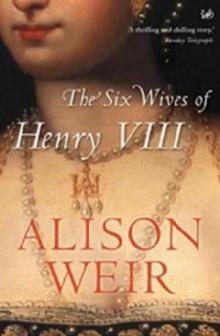 Six Wives of Henry VIII
Six Wives of Henry VIII Elizabeth of York: A Tudor Queen and Her World
Elizabeth of York: A Tudor Queen and Her World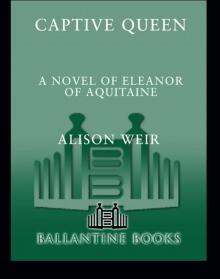 Captive Queen
Captive Queen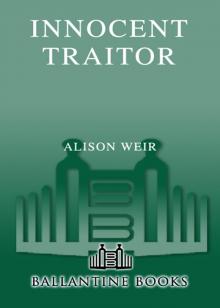 Innocent Traitor
Innocent Traitor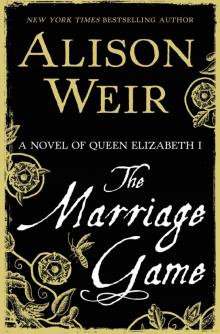 The Marriage Game
The Marriage Game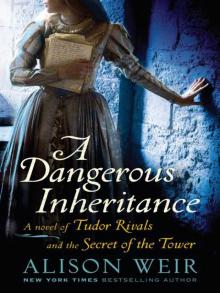 A Dangerous Inheritance
A Dangerous Inheritance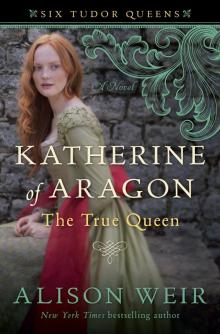 Katherine of Aragón: The True Queen
Katherine of Aragón: The True Queen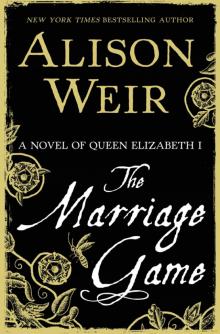 The Marriage Game: A Novel of Queen Elizabeth I
The Marriage Game: A Novel of Queen Elizabeth I Princes in the Tower
Princes in the Tower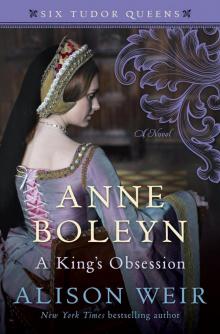 Anne Boleyn: A King's Obsession
Anne Boleyn: A King's Obsession Traitors of the Tower
Traitors of the Tower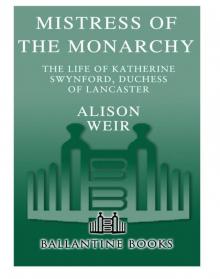 Mistress of the Monarchy: The Life of Katherine Swynford, Duchess of Lancaster
Mistress of the Monarchy: The Life of Katherine Swynford, Duchess of Lancaster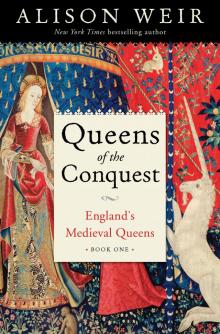 Queens of the Conquest: England’s Medieval Queens
Queens of the Conquest: England’s Medieval Queens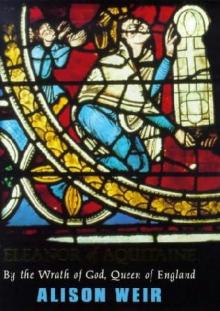 Eleanor of Aquitaine: A Life
Eleanor of Aquitaine: A Life Mary, Queen of Scots, and the Murder of Lord Darnley
Mary, Queen of Scots, and the Murder of Lord Darnley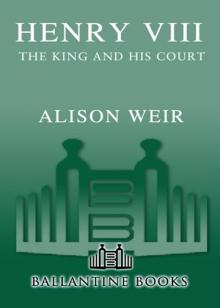 Henry VIII: The King and His Court
Henry VIII: The King and His Court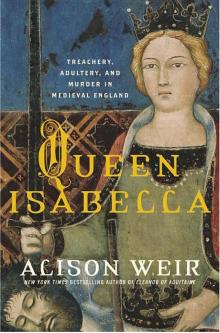 Queen Isabella: Treachery, Adultery, and Murder in Medieval England
Queen Isabella: Treachery, Adultery, and Murder in Medieval England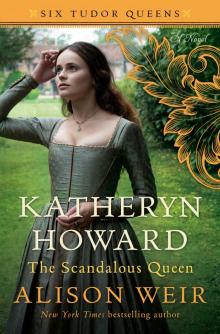 Katheryn Howard, the Scandalous Queen
Katheryn Howard, the Scandalous Queen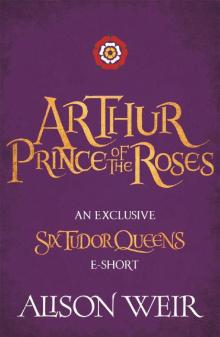 Arthur- Prince of the Roses
Arthur- Prince of the Roses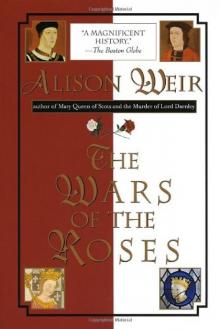 The Wars of the Roses
The Wars of the Roses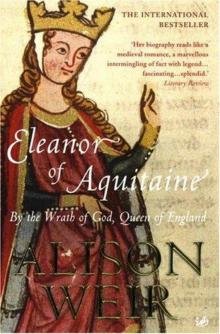 Eleanor of Aquitaine: By the Wrath of God, Queen of England
Eleanor of Aquitaine: By the Wrath of God, Queen of England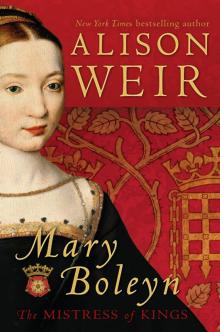 Mary Boleyn: The Great and Infamous Whore
Mary Boleyn: The Great and Infamous Whore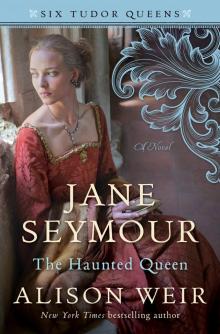 Jane Seymour: The Haunted Queen
Jane Seymour: The Haunted Queen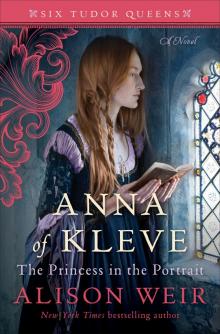 Anna of Kleve, the Princess in the Portrait
Anna of Kleve, the Princess in the Portrait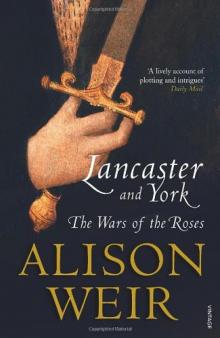 Lancaster and York: The Wars of the Roses
Lancaster and York: The Wars of the Roses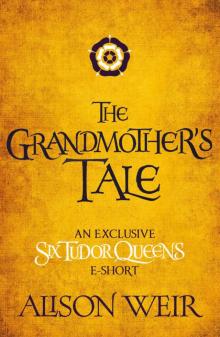 The Grandmother's Tale
The Grandmother's Tale The Princess of Scotland (Six Tudor Queens #5.5)
The Princess of Scotland (Six Tudor Queens #5.5)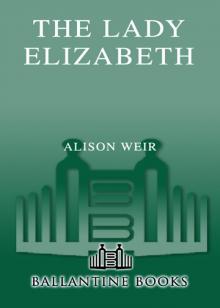 The Lady Elizabeth
The Lady Elizabeth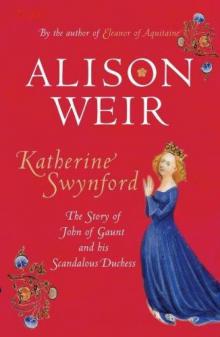 Katherine Swynford: The Story of John of Gaunt and His Scandalous Duchess
Katherine Swynford: The Story of John of Gaunt and His Scandalous Duchess The Curse of the Hungerfords
The Curse of the Hungerfords The Lost Tudor Princess: The Life of Lady Margaret Douglas
The Lost Tudor Princess: The Life of Lady Margaret Douglas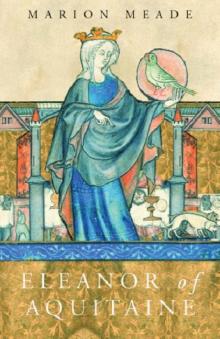 Eleanor of Aquitaine
Eleanor of Aquitaine Mistress of the Monarchy
Mistress of the Monarchy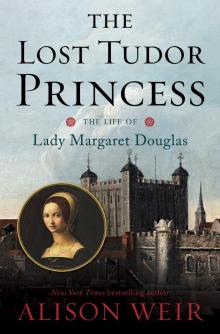 The Lost Tudor Princess
The Lost Tudor Princess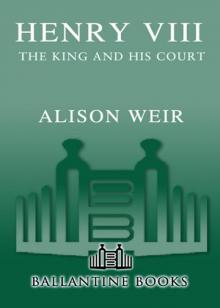 Henry VIII
Henry VIII Anne Boleyn, a King's Obsession
Anne Boleyn, a King's Obsession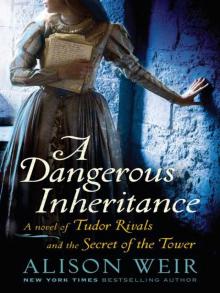 A Dangerous Inheritance: A Novel of Tudor Rivals and the Secret of the Tower
A Dangerous Inheritance: A Novel of Tudor Rivals and the Secret of the Tower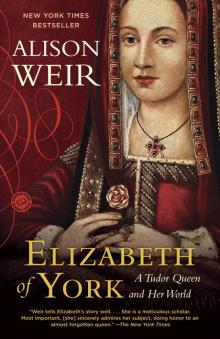 Elizabeth of York
Elizabeth of York Katherine of Aragon, the True Queen
Katherine of Aragon, the True Queen Katherine Swynford
Katherine Swynford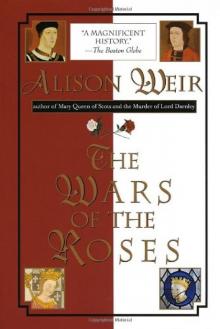 Wars of the Roses
Wars of the Roses Queens of the Conquest
Queens of the Conquest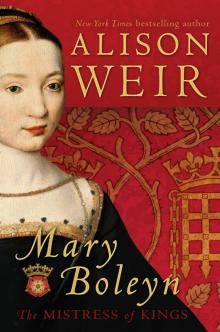 Mary Boleyn
Mary Boleyn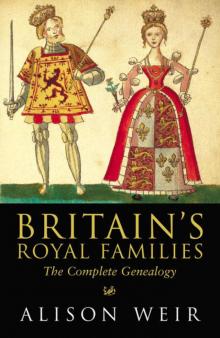 Britain's Royal Families
Britain's Royal Families The Tower Is Full of Ghosts Today
The Tower Is Full of Ghosts Today Life of Elizabeth I
Life of Elizabeth I Anne Boleyn A King's Obssession
Anne Boleyn A King's Obssession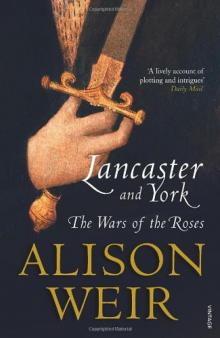 Lancaster and York
Lancaster and York Jane Seymour, the Haunted Queen
Jane Seymour, the Haunted Queen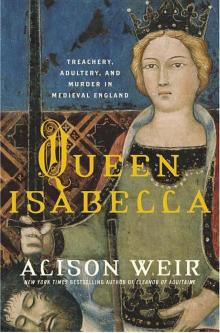 Queen Isabella
Queen Isabella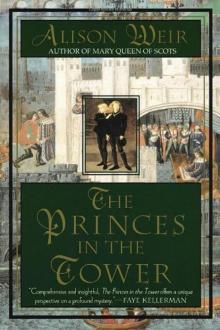 The princes in the tower
The princes in the tower